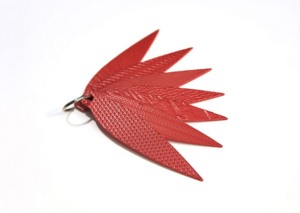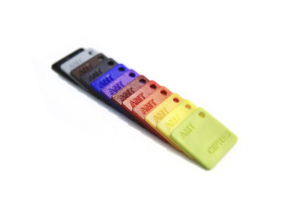 Surface finishing and coloring post processing solutions are necessary when it comes to producing quality 3D printed parts. In February, Additive Manufacturing Technologies Ltd (AMT) was awarded £624,000 by Innovate UK to lead a consortium in a two-year project to develop and bring to market AMT’s automated, intelligent post-processing machine, PostPro3D, which processes 3D printed polymer parts using the proprietary PUSh Process. Earlier this month, Sheffield-based AMT announced a post processing partnership with US additive manufacturing service bureau Midwest Prototyping LLC, and today we learned about the company’s latest partner, German design studio and service bureau CIPRES.
Surface finishing and coloring post processing solutions are necessary when it comes to producing quality 3D printed parts. In February, Additive Manufacturing Technologies Ltd (AMT) was awarded £624,000 by Innovate UK to lead a consortium in a two-year project to develop and bring to market AMT’s automated, intelligent post-processing machine, PostPro3D, which processes 3D printed polymer parts using the proprietary PUSh Process. Earlier this month, Sheffield-based AMT announced a post processing partnership with US additive manufacturing service bureau Midwest Prototyping LLC, and today we learned about the company’s latest partner, German design studio and service bureau CIPRES.
 CIPRES delivers high-end 3D printed consumer and industrial end-use products, and has brought multiple 3D printed accessories (like wristwatches), eyewear, and other product designs to market. The company began working with AMT earlier this year, offering its expertise during the beta testing phase for the next-gen PostPro3D.
CIPRES delivers high-end 3D printed consumer and industrial end-use products, and has brought multiple 3D printed accessories (like wristwatches), eyewear, and other product designs to market. The company began working with AMT earlier this year, offering its expertise during the beta testing phase for the next-gen PostPro3D.
Thanks to the new partnership with AMT, CIPRES, which provides SLS 3D printing and e-coloring services, will be the very first European company to exclusively provide its users with high-speed surface finishing – a ‘finishing touch,’ if you will. This will be achieved through its proprietary e-coloring technology and AMT’s PostPro3D system.
“We are already producing several different wearable products but our main focus has always been in the eyewear industry,” said CIPRES co-founder Ingrid Prestien. “The combination of PostPro3D and e-coloring is an ideal multi-functional technology as we see post-processing as an additional and highly strategic bunch of production in the future of the AM industry.”
The automated surface-finishing PostPro3D system is able to process 3D printed nylon parts (PA12, PA11, PA6.6) on all major powder bed fusion platforms, and can also be used with composite materials and elastomers. The user sets the required surface smoothness for whatever end-product the technology will be applied to, and six-axis robotic arms are used to handle the parts. AMT plans for future versions of the system to use its proprietary machine leaning algorithms to provide feedback during processing.
 The CIPRES eco-friendly e-coloring technology allows all plastic laser-sintered parts to be delivered in one of 12 desired colors, and the parts’ thermal, mechanical, and geometric properties remain. By combining PostPro3D and e-coloring into one unique solution, users will be able to produce fully finished 3D printed and mass-customized products. The solution will work with laser sintering, voxeljet‘s high speed sintering (HSS) technology, and HP’s Multi Jet Fusion (MJF).
The CIPRES eco-friendly e-coloring technology allows all plastic laser-sintered parts to be delivered in one of 12 desired colors, and the parts’ thermal, mechanical, and geometric properties remain. By combining PostPro3D and e-coloring into one unique solution, users will be able to produce fully finished 3D printed and mass-customized products. The solution will work with laser sintering, voxeljet‘s high speed sintering (HSS) technology, and HP’s Multi Jet Fusion (MJF).
As more high-speed 3D printing systems continue to be developed, the market for 3D printed, mass-produced and mass-customized goods is growing quickly. Product development and time to market can both be accelerated with the ability to rapidly 3D print fully finished parts, which helps companies respond to market demands and product design iterations. CIPRES’ clients will be able to leverage the benefits that result from a more direct, flexible digital manufacturing approach, and offer unique, high quality consumer products, as well as customization and limited collection series.
By combining e-coloring with smooth surface finishing, an important step is added in to the digital production value chain. CIPRES will be using the technology to produce unique, customized eyeglass frames – the combined solution will offer color and surface quality that matches eyewear manufactured using traditional methods. The company’s collaboration with AMT will also allow CIPRES to offer manufacturers other high-performance 3D printed products that feature high aesthetic properties.
CIPRES is launching the high-speed, automated surface finishing and e-coloring service at the TCT Show in Birmingham this week; you can also visit AMT at the show at Stand H66P.
Share your thoughts on this and other 3D printing topics at 3DPrintBoard.com or below.
Subscribe to Our Email Newsletter
Stay up-to-date on all the latest news from the 3D printing industry and receive information and offers from third party vendors.
You May Also Like
Blue Laser Firm NUBURU Explores Strategic Alternatives Amid NYSE Compliance Challenges
In a strategic move reflecting the current macroeconomic landscape, NUBURU, Inc. (NYSE American: BURU), a pioneer in industrial blue laser technology, has announced its decision to explore a wide array...
Flexible Wireless Temperature Sensor Made with 3D Printing
Researchers from the University of Glasgow, University of Southampton, and Loughborough University have developed an innovative flexible temperature sensor utilizing microwaves and 3D printing technology. As detailed in an article...
3D Printing Laser Maker NUBURU Faces NYSE American Compliance Challenge
NUBURU (NYSE American: BURU), known for its innovative high-power and high-brightness industrial blue laser technology, has received a non-compliance notice from the NYSE American, formerly the American Stock Exchange (AMEX)....
3D Printing Resilience: the Case of Fiber Lasers
Since at least 2020, additive manufacturing (AM) has become more and more synonymous with the concept of supply chain resilience. In 2024, there is almost guaranteed to be a striking...

































